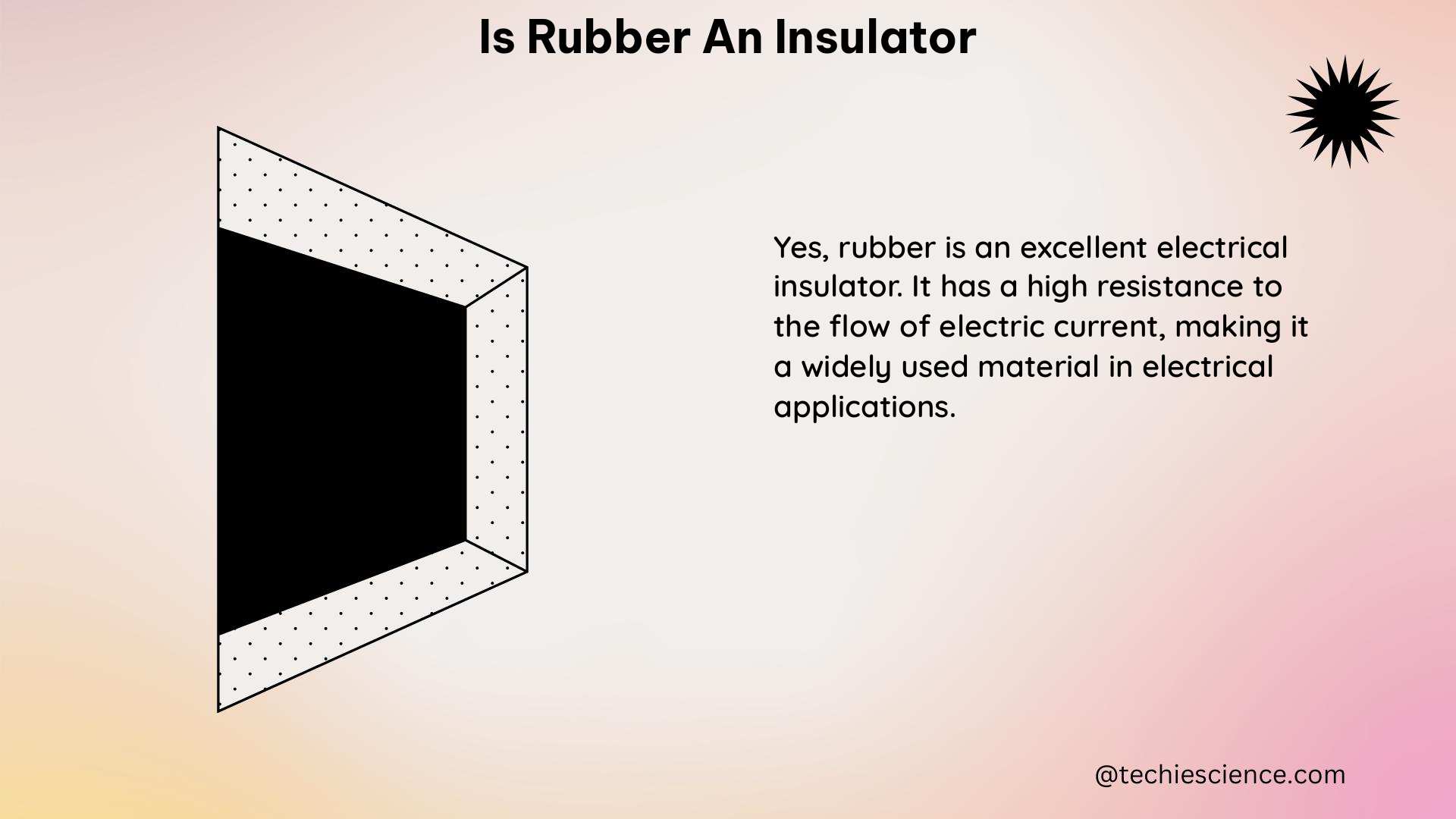Rubber is a remarkable material that exhibits exceptional insulating properties, making it a crucial component in various electrical and electronic applications. This comprehensive guide delves into the technical details of rubber’s insulating capabilities, providing physics students with a deep understanding of this versatile material.
Electrical Resistance and Conductance of Rubber
The electrical resistance and conductance of rubber are the primary factors that determine its insulating properties. Resistance, denoted as R, is a measure of the opposition to the flow of electric current, while conductance, denoted as G, is the reciprocal of resistance and represents the ease with which electric current can flow through a material.
The resistance and conductance of a conductor with a uniform cross-section can be calculated using the following formulas:
R = ρ(l/A)
G = σ(A/l)
Where:
– R is the electrical resistance (in ohms, Ω)
– G is the electrical conductance (in siemens, S)
– ρ is the electrical resistivity of the material (in ohm-meters, Ω·m)
– σ is the electrical conductivity of the material (in siemens per meter, S/m)
– l is the length of the conductor (in meters, m)
– A is the cross-sectional area of the conductor (in square meters, m²)
The resistivity and conductivity of rubber are the key parameters that determine its insulating properties. Rubber has a very high electrical resistivity, typically in the range of 10^13 to 10^16 Ω·m, which is significantly higher than that of metals (e.g., copper has a resistivity of around 10^-8 Ω·m). This high resistivity translates to a low conductance, making rubber an excellent insulator.
Dielectric Strength of Rubber

In addition to its high electrical resistance, rubber also possesses a high dielectric strength, which is the maximum electric field that the material can withstand before breaking down and becoming conductive. The dielectric strength of rubber is typically in the range of 15 to 30 kV/mm, depending on the specific type and composition of the rubber.
The dielectric strength of a material is an important property in high-voltage applications, as it determines the maximum voltage that can be applied across the material without causing electrical breakdown and potential damage to the system. The high dielectric strength of rubber makes it an ideal insulating material for use in power cables, transformers, and other high-voltage electrical equipment.
Environmental Factors Affecting Rubber’s Insulating Properties
Rubber’s insulating properties are relatively stable and unaffected by environmental factors, such as moisture and temperature, compared to other insulating materials. This makes rubber a reliable and durable insulator in a wide range of operating conditions.
Moisture Resistance
Rubber’s non-polar molecular structure and low water absorption rate contribute to its excellent moisture resistance. Even in humid or wet environments, rubber maintains its high electrical resistance and does not readily absorb water, which can degrade the insulating properties of other materials.
Temperature Resistance
Rubber’s insulating properties are also relatively stable over a wide range of temperatures. The resistivity and dielectric strength of rubber remain relatively constant from -40°C to 100°C, making it suitable for use in both cold and hot environments.
Applications of Rubber as an Insulator
Rubber’s exceptional insulating properties make it a versatile material for various electrical and electronic applications, including:
-
Power Cables: Rubber is commonly used as an insulating material in the construction of power cables, providing protection against electrical leakage and ensuring safe power transmission.
-
Transformers and Switchgear: Rubber is used as an insulating material in the design of transformers and switchgear, where its high dielectric strength and resistance to environmental factors are crucial.
-
Electrical Appliances: Rubber is used as an insulator in the internal components of electrical appliances, such as motors, switches, and wiring, to prevent electrical shocks and short circuits.
-
Electrical Insulation: Rubber is used as an insulating material in a wide range of electrical and electronic devices, including circuit boards, electrical panels, and insulation for wires and cables.
-
High-Voltage Equipment: Rubber’s high dielectric strength makes it an ideal insulator for use in high-voltage equipment, such as power transmission lines, substations, and electrical insulators.
Conclusion
Rubber is an exceptional insulator, with a combination of high electrical resistance, high dielectric strength, and environmental stability. These properties make rubber a crucial material in various electrical and electronic applications, ensuring the safe and reliable operation of electrical systems. By understanding the technical details of rubber’s insulating capabilities, physics students can gain a deeper appreciation for the versatility and importance of this remarkable material.
References
- Electrical resistance and conductance – Wikipedia. Retrieved from https://en.wikipedia.org/wiki/Electrical_resistance_and_conductance
- Portable Non-Destructive Magnetic Resonance Sensor for Assessing the Aging Status of Silicon Rubber Insulators. Retrieved from https://www.ncbi.nlm.nih.gov/pmc/articles/PMC9656415/
- Electricity on Rubber Surfaces: A New Energy Conversion Effect. Retrieved from https://www.ncbi.nlm.nih.gov/pmc/articles/PMC6645551/
- Electrical Insulation: Basics, Types, and Applications. Retrieved from https://www.sciencedirect.com/topics/engineering/electrical-insulation
- The Importance of Electrical Insulation in Electrical Systems. Retrieved from https://www.electrical4u.com/importance-of-electrical-insulation-in-electrical-systems/
- Dielectric Strength of Materials. Retrieved from https://www.engineersedge.com/electrical/dielectric_strength_of_materials.htm
Hi…I am Ankita Biswas. I have done my B.Sc in physics Honours and my M.Sc in Electronics. Currently, I am working as a Physics teacher in a Higher Secondary School. I am very enthusiastic about the high-energy physics field. I love to write complicated physics concepts in understandable and simple words.